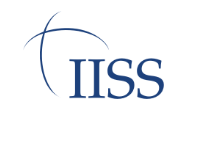
作者/Author(s): Meia Nouwens, Maria Shagina, and Erik Green
網站來源/Source: International Institute for Strategic Studies
日期/Date: 02/27/2025
關鍵字/Keywords: 經濟、中國、出口管制
摘要:
中國近期的經濟制裁能力有顯著提升,特別擴展了出口管制工具。中國非常了解自身的經濟優勢、弱點與對美國制裁的脆弱性。雖然中國的出口管制與美國類似,但中國建立了獨特的供應鏈預警系統,以加強控制關鍵戰略產業。這些行動應被解讀為中國試圖提升自身的經濟韌性與自給自足能力,以應對經濟成長以及與美國的戰略競爭。雖然這也顯示中國具備進行經濟攻勢的能力,但北京並沒有直接針對歐盟。然而,由於中國出口管制具備治外法權性質,美國的盟友可能會成為間接受害者。
- 出口管制已成為美中戰略競爭的重要組成部分。美國利用經濟工具阻止中國取得本土創新與軍事現代化的技術優勢。在成為出口管制的受害者後,中國開始建立自己的防禦性措施,同時發展反制手段。
- 中國模仿美國的出口管制制度,整合軍民兩用產品、軍事零件與國家安全技術的立法至同一架構,並設立觀察名單,監控那些不配合政府政策的企業,並對這些企業提高出口許可要求。
- 與美國的做法很類似,中國也引入了「不可靠實體清單」,將治外法權納入管制體制,並強制性報告所有疑似違反出口管制的行為。
- 中國經濟國策的變化具有多種意義:
- 中國的出口管制措施已不再只是象徵性,而是經過精準調整,能對對手造成實質性經濟損害,同時降低對中國企業的負面影響。
- 中國加快了出口管制措施的落地,雖然目前大部分的措施主要都是為了針對美國的報復性手段。
- 中國將非正式的報復手段結合正式法律管制,形成更完整的經濟戰略。
- 中國的出口管制不只是針對後端產品,而是轉向供應鏈金字塔,利用其在關鍵原材料與製造上的主導地位影響對手。
- 此外,中國也發展了相應的防禦機制,以保護自身供應鏈。北京政府近期建立了供應鏈預警系統,追蹤關鍵出口商品的去處,防止流入西方供應鏈。
Summary:
China has recently improved its economic statecraft, particularly by expanding its export control toolkits. China pinpointed its economic strengths, weaknesses, and vulnerabilities to U.S. sanctions. Although Chinese export controls are similar to those of the U.S., China has innovated by creating an early-warning system in its supply chain. These actions should be interpreted as China's attempt to increase its economic resilience and self-reliance in areas critical to economic growth and its strategic competition with the U.S. Although it also signals China's ability to use offensive means, China does not seek to use them directly against the E.U. Yet, the U.S. allies may be indirect victims due to the extraterritorial nature of Chinese export controls.
- Export controls are a feature in the U.S.-China strategic competition. The U.S. used its economic instruments to deny China from gaining a technological edge in its indigenous innovation and military modernization. After being the victim of export controls, China built up its defensive measures and offensive instruments.
- China mimicked the U.S. export control regimes, consolidating the legislation of dual-use goods, military components, and national security technology into one framework. China also introduced a "Watch List" to monitor companies that do not cooperate with the government and increase licensing requirements on these companies.
- Similar to the U.S., China also introduced the Unreliable Entity List, incorporated extraterritorial measures into its regime, and mandated reporting of any export control violations.
- The changes in Chinese economic statecraft have several significance:
- It is no longer symbolic but calibrated to inflict real economic pains on its adversaries while reducing the repercussions on Chinese firms.
- China has hastened the introduction of its export control measures, although they are mainly retaliatory measures against the U.S.
- China integrated informal retaliation with formalized legal responses.
- Rather than targeting end products, China's approach is at the top of the supply chain, where it exhibits dominance over critical materials and processes.
